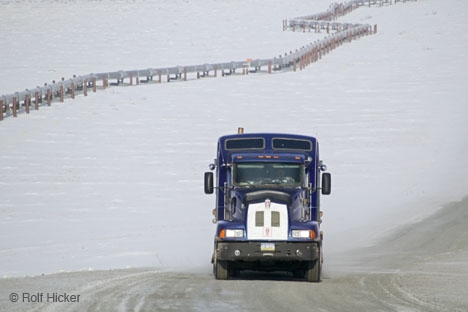
Driving large trucks is challenging in fair weather, let alone in poor, wintry conditions. There are many proactive precautions, as well as reactive techniques that can ensure driver safety, as well as those sharing the road, during these icy conditions.
Carry a first-aid kit for on-road emergencies, and always ensure that the vehicle is in adequate working condition for the road ahead. This includes winter-proofing and balancing the cargo to ensure proper weight distribution, but also may include, depending on the severity of the conditions, decreasing the air pressure in the tires and adding driving chains for increased traction.
Assess the conditions ahead before arriving. Always drive defensively yet deliberately. Maintain complete and confident control of the steering wheel and avoid any driving distractions, such as a cell phone or unsettling music.
Increase following distance by as much as 10 seconds above the normal, which can ensure adequate reaction time in the case of an imminent collision. Drive slowly and brake gently, yet intentionally, using the ball of the foot rather than the entire foot. This, along with use of Jake brakes and exhaust brakes (where legal), can prevent the wheels from locking up, which ensures control and prevents "jack knifing" of the trailer.
Avoid accelerating on uphill slopes, rather maintaining a constant speed while ascending the hill. One way to do this is to gather enough forward momentum from the previous downhill to climb the current hill without using much engine power. The more torque available to the wheels, the more likely they are to slip. So on the same note, higher, taller gears are more favorable while climbing because they limit that available torque. Lower gears make slipping while accelerating much harder to avoid.
Look for ice on trees and side-view mirrors as stark clues of conditions, as well as sudden cessations of water "kick-up" from the vehicle being followed. Driving in these conditions requires confidence and skill. If those two qualities are not present, the best action is letting a more experienced trucker do the driving.